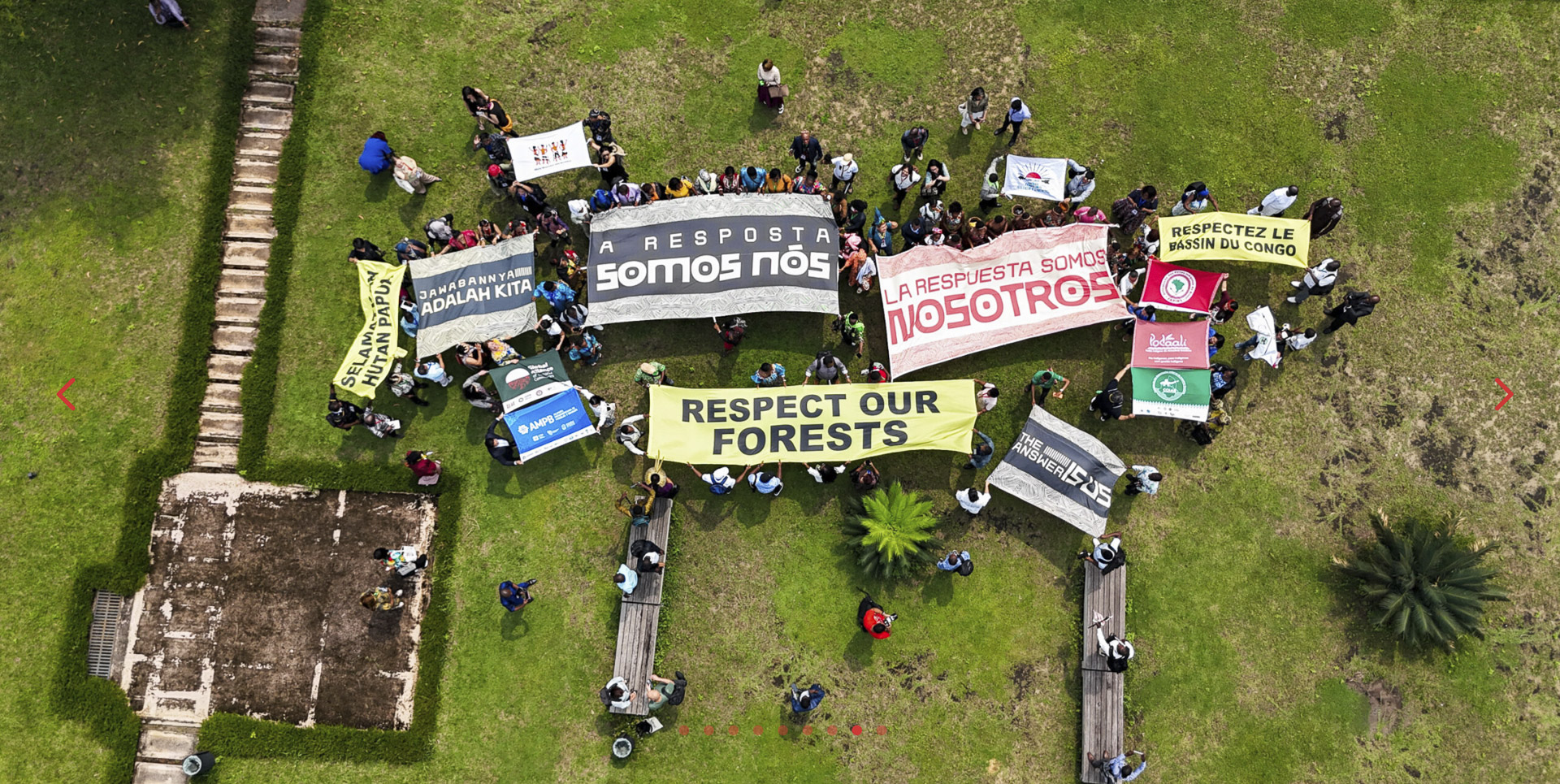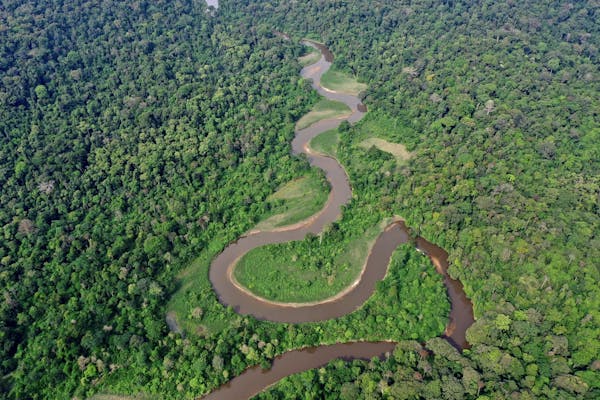New report reveals industrial expansion threatening Indigenous Lands across the Tropics
A sweeping new report from the Global Alliance of Territorial Communities (GATC) and Earth Insight warns that Indigenous Peoples and local communities (IPLCs), who protect nearly one billion hectares of the world’s most vital tropical forests, are facing mounting industrial threats that could derail global climate and biodiversity goals.

Titled “Indigenous Peoples’ Territories and Local Communities on the Frontlines: Mapping Threats and Solutions Across the World’s Largest Tropical Forests,” the report combines geospatial mapping, community data, and case studies from the Amazon, Congo Basin, Indonesia, and Mesoamerica. Together, these regions represent 35 million Indigenous Peoples and local communities safeguarding forests essential to climate stability and biodiversity.
Released in five languages, the report calls for urgent global action to uphold Indigenous territorial rights, ensure free, prior, and informed consent, and redirect finance toward community-led conservation and governance.
A global crisis in the making
The analysis paints a stark picture of industrial expansion:
- Amazon: 31 million hectares (12%) of Indigenous and community lands are overlapped by oil and gas blocks; 9.8 million hectares by mining concessions; and 2.4 million hectares by industrial logging.
- Congo Region: 38% of community forests overlap oil and gas blocks; 42% face mining threats; and 6% are under pressure from industrial logging.
- Indonesia: 18% (6 million hectares) of Indigenous territories are overlapped by wood concessions, 5% (1.6 million hectares) by oil and gas blocks, and nearly 1 million hectares by mining operations.
- Mesoamerica: 18.7 million hectares (17%) of community lands are affected by mining concessions and 3.7 million hectares by oil and gas concessions.
The report also highlights hotspots where overlapping industrial and infrastructure projects threaten both ecosystems and the lives of Indigenous Peoples living in voluntary isolation. This includes the Yavarí-Tapiche Corridor in Peru and Brazil, Mato Grosso do Sul in Brazil, and North Maluku in Indonesia.
“Our communities remain resilient and play a vital role in protecting vast traditional territories. We cannot continue if our territories, rights, and livelihoods remain under threat.” — Joseph Itongwa, Regional Coordinator of REPALEAC in Central Africa.

The Waorani Indigenous people lead a demonstration in front of the Constitutional Court in Quito, Ecuador. Image Credit: AP Photo/Dolores Ochoa via Earth Insight.
Green transition, old threats
While extractive industries like oil, gas, and mining have long driven deforestation and displacement, the report warns that new pressures are emerging under the banner of the “green transition.” Projects for critical minerals and large-scale renewable energy are increasingly targeting Indigenous lands, raising concerns about repeating past mistakes in the name of sustainability.
Despite representing less than 5% of the global population, Indigenous Peoples and local communities safeguard 54% of the world’s remaining intact forests and 43% of Key Biodiversity Areas. Yet, they receive a fraction of the climate finance their stewardship deserves.
Community-led models that work
Amid the threats, the report showcases powerful examples of Indigenous and local leadership driving lasting conservation outcomes:
- In Guatemala’s Maya Biosphere Reserve, community forest concessions lost only 1.5% of forest cover over a decade, seven times less than national averages.
- In Colombia, 25 Indigenous and community Territorial Entities awaiting formal recognition maintain 99% of forests intact across 36% of the Colombian Amazon.
- In Indonesia’s Wallacea Archipelago, Gendang Ngkiong communities reclaimed 892 hectares through participatory mapping and legal reform.
These success stories demonstrate that when land rights and governance systems are secured, communities not only halt deforestation but also strengthen biodiversity and climate resilience.
“We are not a barrier of last resort; we are the living root of a possible future.” — Kleber Karipuna, Co-Chair of GATC and Executive Coordinator of APIB (Articulation of Indigenous Peoples of Brazil).

Image Credit: The Answer Is Us - GATC via Earth Insight.
Calls to action
The report reinforces the core principles of the Brazzaville Declaration and GATC’s Five Demands, which together outline a pathway from extraction to regeneration:
- Secure land rights for Indigenous Peoples and local communities.
- Guarantee free, prior, and informed consent (FPIC) for all projects affecting their territories.
- Ensure direct financing to community-led initiatives.
- Protect defenders’ lives and uphold justice for those under threat.
- Integrate traditional knowledge into global and national policy frameworks.
The authors urge governments to align policies with Indigenous leadership, financial institutions to redirect investments away from destructive industries, and international bodies to move from symbolic recognition to enforceable protection of Indigenous rights and territories.
“The evidence is clear, without urgent recognition of territorial rights and the protection of ecosystems, global climate and biodiversity goals cannot be achieved.” — M. Florencia Librizzi, Deputy Director of Earth Insight.
Toward a regenerative future
The report’s findings serve as both a warning and a blueprint. With the world preparing for COP30 in Belém, Brazil, the message is clear: the future of the planet depends on securing the rights of those who have protected it longest.
As Indigenous leaders emphasize, the path forward is not one of extraction but of regeneration, rooted in respect, reciprocity, and partnership with the communities who sustain the world’s living forests.
Read the Full Report%20(1)%20(1).jpg?auto=compress%2Cformat&w=1440)

.jpg?auto=compress%2Cformat&h=600&w=600)

